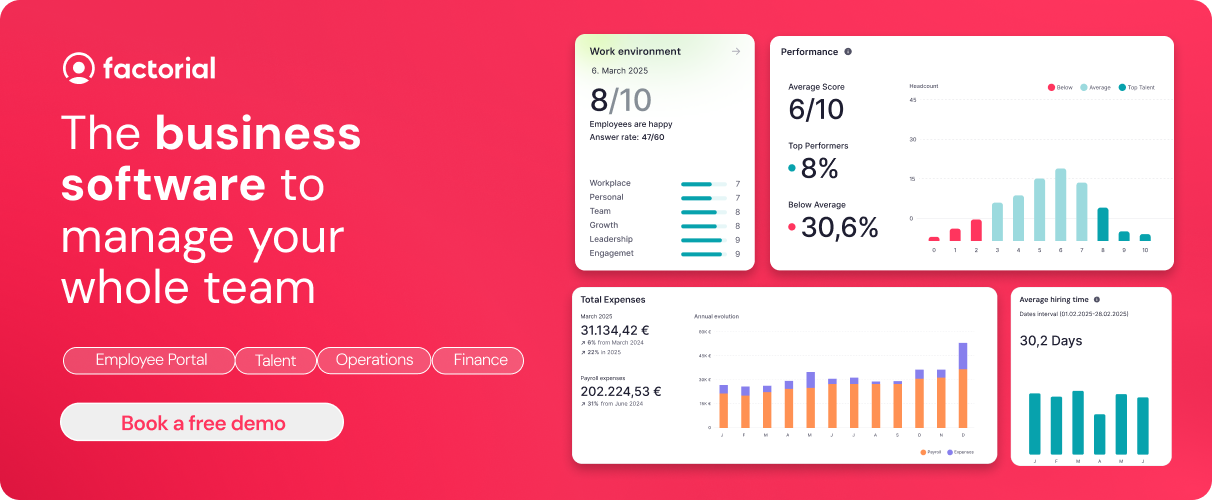Employees may need to use paid time off (PTO) for any number of reasons: sick time, personal days, vacation. While fielding PTO requests is no one’s favorite activity, efficient PTO management will boost employee satisfaction and productivity.
Managers need to consider how to process time off requests from both non-exempt and exempt employees. While non-exempt employees must only be paid for hours worked, exempt employees must receive their salaries regardless of time clocked. Without clear policies around PTO for these two groups, employers risk legal liability for non-compliance with federal law.
Here, we’ll discuss how to request PTO, how to manage PTO requests, and how to create simple and enforceable policies for all employees.
- Paid Time Off Requests
- Requesting PTO by Email: A Guide
- Is It Time to Give Up PTO Letters?
- Make a Comprehensive PTO Policy
- Modernize Your PTO Processes
- ✅ Time off Management Software
PTO Requests for Exempt and Non-exempt Employees
Non-exempt Employees
The Fair Labor Standards Act (FLSA) sets the national minimum wage and mandates that employees are paid time-and-a-half for all hours worked over forty in a week.
Non-exempt employees only have to be paid when they work, so they may take partial and full unpaid vacation days whenever they are authorized. Depending on what state they live in, non-exempt employees may also accrue specific amounts of paid time off for every hour worked.
Exempt Employees
Exempt employees are not entitled to overtime pay for any hours worked beyond the standard 40. Employees may be exempt from FLSA under the following criteria:
- They work on a salary basis (as opposed to hourly). Salaried employees receive payment for any week during which they perform work, regardless of the number of hours worked.
- They earn $684 per week or $35,568 annually.
- They perform executive, administrative, and professional duties.
If employers dock the pay of exempt employees for missed hours of work, those employees will no longer qualify for an exemption. This is because salaried employees definitionally receive payment no matter how many hours they work.
According to the Department of Labor (DOL), employers can require exempt employees to use vacation days for partial-day absences. This means that if an exempt employee misses work, employers can deduct from their vacation time without risking that employee’s exemption status. What is important is that the employee receives their full salary, whether through vacation days or compensatory time.
Salary deductions are permissible if the employee has exhausted their PTO, so long as their leave is not for illness or disability.
Different states may offer their own laws protecting employees, so it is best to check with state and local governments to understand better the specific paid time off USA policies.
Discover Business Management Software that helps your team do more.👇
For Employees: How to Request PTO Email
It’s time to send your PTO request meaning you need to write an email. Whether you are an exempt or non-exempt employee, it is important to make this message precise. You don’t need a PTO request template! Here, we’ll cover how to request PTO in an efficient and professional way.
Check the Handbook
Before sending your time off request, take a peek at the company’s time off request policy. You probably need to make your request well in advance of the dates you hope to take off. There may also be restrictions surrounding what dates you can and cannot request off. Make sure your request is compliant with company policy before you start typing.
Start With a Clear Subject Line
Include your name and the dates you are requesting off. For example: “John Smith PTO Request: August 5-12.” Hopefully, this will keep your email from getting lost in the fray.
State Your Desired Days Off
This is the important part! Specify the exact days you would like to take off (“Wednesday, August 5th through Wednesday, August 12th”) and make it clear that you will be using your PTO.
Give a Reason
Depending on your company’s leave policy, you may need to differentiate between types of time off requests. Is this for sick leave, vacation time, bereavement leave? As more and more businesses offer PTO banks which do not distinguish between different kinds of leave, this may be unnecessary.
List Preparations
Will one of your coworkers be fielding the questions that you typically deal with? Will you be putting in compensatory time during the week before or week after? Think about how the office can carry on without you (for a little while). Bonus: adequate prep will lead to fewer work-related disruptions during your time off.
Follow-up on PTO Requests
If you don’t hear back from your manager, give them a nudge. It is a sad truth that PTO requests sent by email may go unseen. You may also wish to remind them of your days off a week or so before you head out.
What If You Never Had To Write a PTO Request Letter Again?
Phew! Manually sending a PTO request form email can be exhausting. What if instead of sending an email and praying it doesn’t get lost in your supervisor’s inbox, you could send a request they are sure to see? With time off management software, you can leave all the discomfort of a PTO email request behind. Employees can select from different categories of time off pre-determined by their employer. Instead of trying to get the language just right, the automated request contains only the facts. This makes the process easier on supervisors and workers alike.
For Managers: Making a PTO Request Policy
It can be tough to know exactly how to manage PTO requests from exempt and non-exempt employees. Employers need to make sure they have a comprehensive leave of absence policy which is easily managed and applicable to all employees. Here’s how to get it right.
Set Expectations
Make a guide to the company’s PTO policies that is accessible to all employees. Remember it must be compliant with state and federal leave of absence laws.
Remember that exempt employees will need to receive their usual salary even when they take time off. Many employers will allow exempt employees to take the time off they need, with the knowledge that these same employees are valuable and often work overtime for no additional compensation.
Some employers may require that exempt employees use their vacation time or work compensatory hours. However, these employers may lose talented workers.
Regardless of whether an employee is exempt or un-exempt, it is a good idea to track their time off for records and hr reports.
Develop Clear Processes
Make it easy for employees to submit requests and keep all requests in one place. Some employers may create an employee vacation request form. Others may prefer automatic requests generated by time-off trackers.
Be Consistent
No one likes denying PTO requests. Make sure that you enforce all policies and rules consistently. Develop rules around overlapping leave requests. Is it up to seniority or is it first come, first serve? Patchy enforcement of rules will open employers up to legal liability and discrimination lawsuits.
With HR software, managers can input company policies and ensure that it is always enforced.
Modernize Your PTO Requests
PTO requests don’t have to be a pain! Managing time off for exempt and non-exempt employees can be easy with the right tools. Make sure all employees are able to take advantage of time off. This will lead to greater employee satisfaction in the long run. Also, remember that it is important that you choose the best PTO Tracking Software.
Factorial is a top rated all-in-one business management software that includes PTO tracking features. From one centralized, singular platform you can monitor performance, process payroll, and track absences. Moreover, with Factorial you’ll gain full visibility into your team’s time off from sick leave and maternal leave to PTO. Transform your PTO management and core business operations with Factorial, the only tool you’ll need to run your business.
Written by Valerie Slaughter



